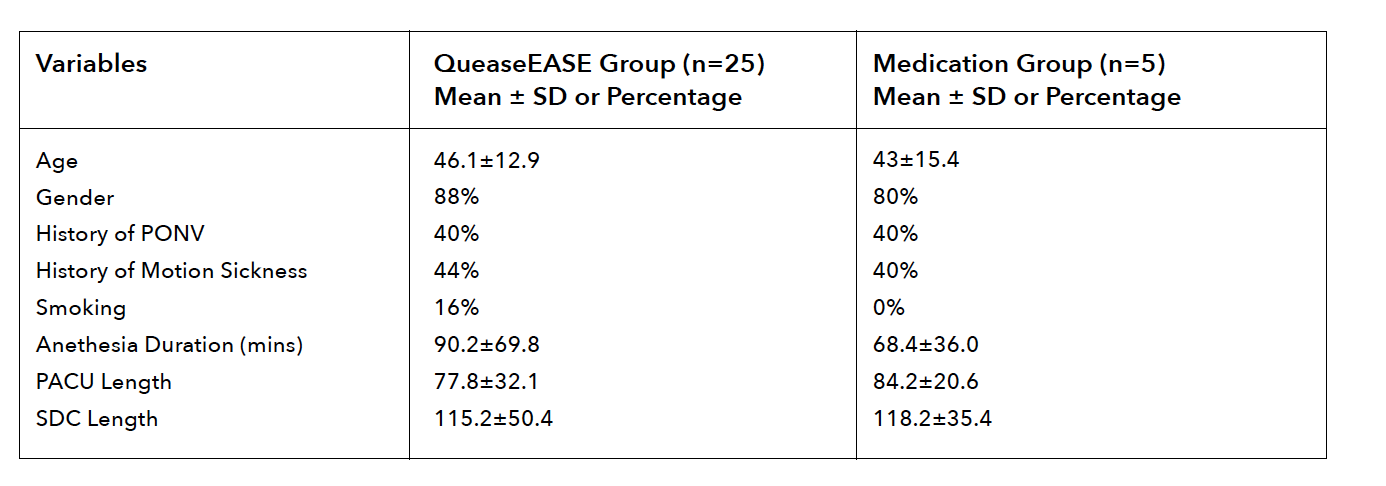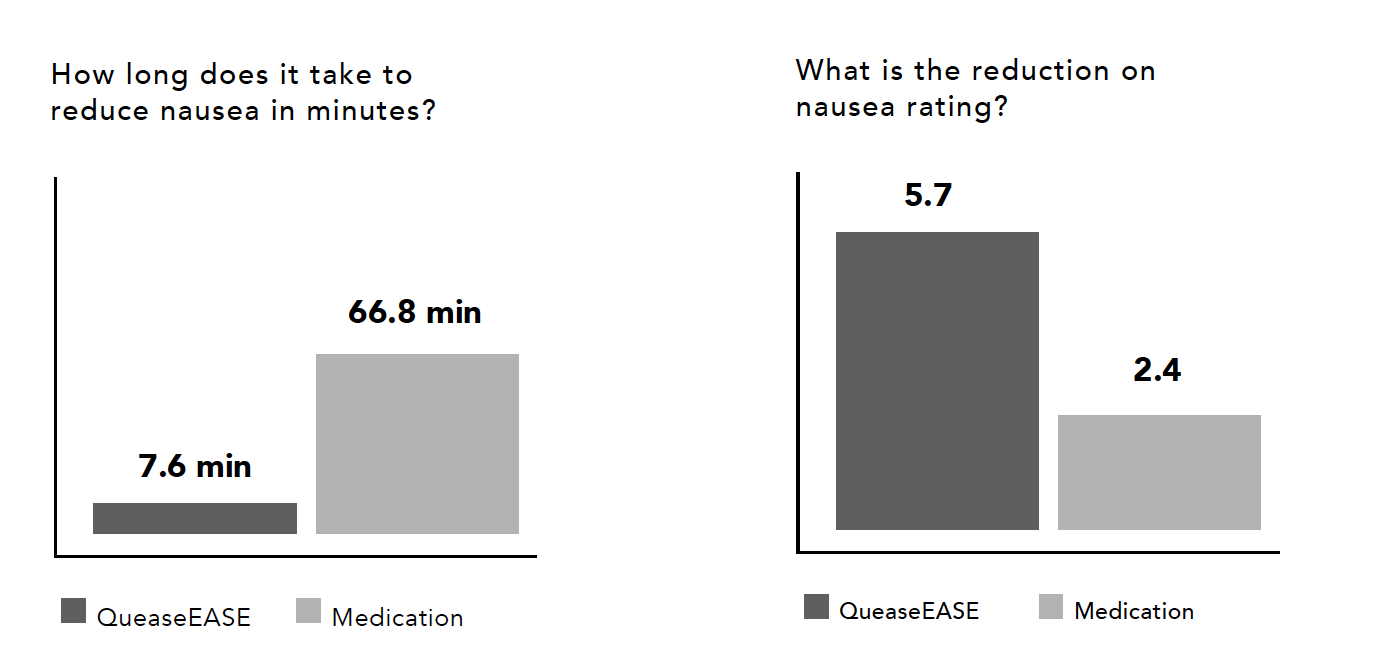
In a randomized study by UMass Lowell School of Nursing comparing QueaseEASE® to conventional medication, PONV relief was achieved within 7.8 minutes for QueaseEASE® users, compared to 66.8 minutes for patients given antiemetics.
AUTHOR(S): Mary Carroll RN CAPA CNOR, Laurie McManus RN BSN, Amanda Uglietta Rn BSN Lowell General Hospital, Yuan Zhang, PhD, RN, School of Nursing, UMass Low
DATE: December 2018
READ THE FULL STUDY BELOW:
SUMMARY OF FINDINGS
QueaseEASE effectiveness in treating nausea received an average 9.0 rating (on a scale of 0-10).
68% of the participants who used QueaseEASE rated product effectiveness at 10.
80% of participants reported that QueaseEASE took away nausea completely.
It took an average of 7.6 mins for QueaseEASE (ranging from 1 – 30 minutes) to reduce nausea, compared to an average of 66.8 mins for standard medication (35 – 128 minutes).
QueaseEASE users reported a 5.7 reduction on nausea rating, compared to an average of 2.4 reduction on nausea rating in the standard medication group.
QUANTITATIVE FINDINGS
A total of 82 participants were randomly assigned to one of two groups: a green bracelet group consisting of 55 participants (using the QueaseEASE nausea management inhaler for those who experienced postoperative nausea) and a white bracelet group of 27 participants, who were given standard medication in the event of postoperative nausea.
Twenty-five members of the green bracelet group reported postoperative nausea. Among the 27 white bracelet participants, 22 did not report postoperative nausea, and therefore did not receive any special care.
Based on the 25 green bracelet (QueaseEASE) participants versus the 5 white bracelet (standard care) participants, baseline comparisons between the two groups are listed below:.

DESCRIPTIVE ANALYSES
An independent sample t-test suggested that the QueaseEASE group and the standard medication group showed no significant differences related to age, gender, previous history of PONV, history of motion sickness, smoking, anesthesia duration, or duration in the PACU (based on 95% confidence, p>0.05).
From a rating of 0-10, QueaseEASE effectiveness in the hospital received an average 9.0 rating with a standard deviation of 1.4, with 68% of the participants rating QueaseEASE effectiveness at 10.
100% of participants reported that they felt QueaseEASE was beneficial.
80% of participants reported that QueaseEASE took away the nausea completely. 20% reported that QueaseEASE helped somewhat, but still felt slightly nauseated.
QueaseEASE effectiveness for post-discharge nausea and vomiting (participants who used QueaseEASE at home) showed an average rating of 9.6 with a standard deviation of 0.8, with 72% of the participants rating QueaseEASE post-discharge effectiveness at a 10.
BIVARIATE ANALYSES
(1) An independent sample t-test suggested that QueaseEASE produced significantly faster effects in treating nausea compared to standard medication (t =7.81, p<0.001).
It took an average of 7.6 mins for QueaseEASE (ranging from 1 min to 30 mins) to reduce nausea, compared to an average of 66.8 mins for standard medication (ranging from 35 mins to 128 mins).
(2) An independent sample t-test suggested that QueaseEASE produced significantly stronger results in reducing nausea compared to standard medication (t=3.36, p<0.01).
The study showed an average of 5.7 reduction on nausea rating in the QueaseEASE group (responses ranging from 2-10) compared to an average of 2.4 reduction on nausea rating in the standard medication group (responses ranging from 1-5).

